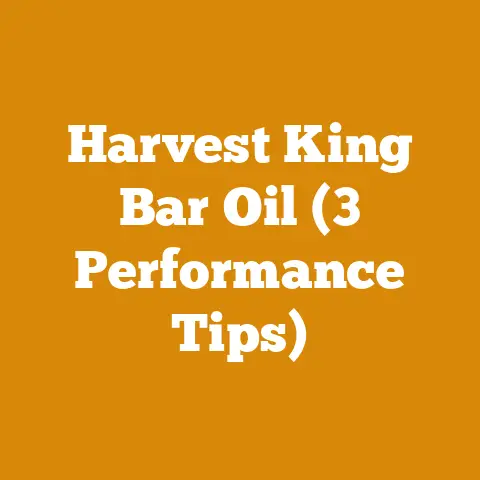Hybrid Poplar Tree (4 Fast-Growing Facts)
Imagine stepping into your backyard
and feeling an immediate sense of calm.
The rustling leaves of tall trees, the
gentle sway of branches acting like a
natural shield from the sun. It’s a
comfort that only nature can provide.
When I think of creating such a space,
the hybrid poplar tree stands out as a
perfect choice. Why? Because it promises
to transform a barren plot into a green
oasis faster than you’d expect.
Why Choose Hybrid Poplar?
You might be wondering why someone would
choose a hybrid poplar over other trees.
Let me share some personal tales and insights
that might just convince you to give them
a try.
Fast-Growing Fact #1: Speed of Growth
The first time I planted hybrid poplars,
I was skeptical about the growth claims.
But witnessing them shoot up nearly 8 feet
in one year was nothing short of astonishing.
It’s like watching nature’s own time-lapse movie.
Personal Experience: A Green Haven
My backyard was once an open space, devoid of shade and character. After planting hybrid poplars, it quickly became a leafy retreat. Within just three years, they provided the perfect canopy for summer gatherings and lazy afternoons. The speed at which they grow makes them ideal for those who are impatient for greenery.
Insight: Understanding Rapid Growth
What sets the hybrid poplar apart is its genetic makeup. This tree is a cross between different species of poplars, combining the best traits for rapid growth and resilience. It’s like having a tree on fast-forward, yet it maintains strength and structure. If you’ve ever been frustrated by slow-growing plants, this is truly a game-changer.
Fast-Growing Fact #2: Soil Adaptability
Another reason these trees are so popular is their ability to thrive in various soil types. From sandy soils to clay-heavy grounds, hybrid poplars are remarkably adaptable.
Tips for Planting
- Choose a Sunny Spot: These trees love sunlight. Ensure they get plenty, as it fuels their rapid growth.
- Water Regularly: In the initial stages, consistent watering helps establish strong roots.
- Space Wisely: Ensure there’s enough room for them to grow without crowding other plants.
Story: Overcoming Soil Challenges
I once helped a friend who struggled with poor soil quality in his garden. Most plants he tried didn’t survive long. However, after planting hybrid poplars, not only did they thrive, but they also improved the soil quality over time. Their roots help aerate and enrich the soil, offering a natural solution to what seemed like an impossible situation.
Fast-Growing Fact #3: Environmental Benefits
Beyond aesthetics and speed, hybrid poplars play an important role in supporting the environment. They act as natural air purifiers and soil stabilizers.
Benefits for Wildlife
These trees provide shelter and food for various wildlife species. Birds often nest in their branches, while small mammals find refuge at their base. Planting hybrid poplars feels like giving back to nature.
Reducing Erosion
In my experience, hybrid poplars have been instrumental in reducing soil erosion on sloped terrains. Their roots bind the soil together, preventing washouts during heavy rains. If you’ve ever dealt with erosion issues, you’ll understand how valuable this trait can be.
Important Safety Callout
Watch Out for Roots: The roots of hybrid poplars can be aggressive and may interfere with nearby structures or underground utilities. It’s crucial to plant them at a safe distance from buildings, septic systems, and pipelines.
Fast-Growing Fact #4: Low Maintenance
One of the most appealing aspects of hybrid poplars is their minimal maintenance requirements. They don’t demand special care or attention once established.
Essential Care Tips
- Prune Wisely: Occasional pruning helps maintain shape and promotes healthy growth.
- Monitor Pests: While generally resilient, it’s good practice to check for any signs of pest infestations.
Story: Effortless Beauty
A neighbor once remarked on how lush and full my hybrid poplars looked compared to his high-maintenance ornamental trees. The secret? Hybrid poplars naturally fend off many common pests and require less frequent pruning. Their resilience means less work for you—a major plus if you’re not keen on constant yard work.
Equipment and Knowledge
Before planting hybrid poplars, you’ll need some basic equipment and knowledge:
- Shovel: For digging holes.
- Watering Can or Hose: To ensure they receive adequate water.
- Mulch: Helps retain moisture and regulate soil temperature.
- Pruning Tools: To trim branches as needed.
Step-by-Step Planting Guide
- Dig the Hole: Make it twice as wide as the root ball to allow easy root expansion.
- Place the Tree: Ensure it’s upright and centered in the hole.
- Backfill with Soil: Gently pack soil around the roots to eliminate air pockets.
- Water Thoroughly: This helps settle the soil and provides initial hydration.
- Apply Mulch: A layer of mulch around the base conserves moisture and prevents weeds.
Cautions and Warnings
- Avoid Overwatering: Excessive water can lead to root rot—ensure proper drainage.
- Monitor Growth: Regularly check for any signs of disease or pests to address issues early.
Common Questions and Concerns
Q: How far apart should I plant them?
A: At least 20 feet apart ensures they have ample space to grow without competition.
Q: Are they suitable for all climates?
A: Hybrid poplars thrive in zones 3-9, so verify your local climate zone before planting.
Q: How can I manage their size?
A: Regular pruning controls height and encourages bushier growth.
Troubleshooting Tips
If you notice yellowing leaves or stunted growth:
- Assess Water Levels: Ensure they’re not waterlogged or too dry.
- Check Soil pH: Hybrid poplars prefer slightly acidic to neutral pH levels.
- Inspect for Pests: Address any infestations promptly with suitable treatments.
Conclusion and Next Steps
Planting hybrid poplars offers quick gratification with lasting benefits. As they mature, these trees will enhance your landscape with beauty, shade, and ecological contributions. Keep an eye on their development, prune when necessary, and enjoy the natural sanctuary you’ve created.
FAQ Section
Q: Do hybrid poplars lose their leaves in winter?
A: Yes, as deciduous trees, they shed their leaves during winter months but return with vibrant foliage in spring.
Q: Can they be used as windbreaks?
A: Absolutely! Their fast growth and dense foliage make them excellent windbreaks.
Q: How long do they live?
A: Hybrid poplars typically have a lifespan of 30-50 years—ideal for those seeking quick results without long-term commitments.
As you embark on your journey with hybrid poplars, remember that each tree has its own personality and may respond differently based on your local conditions. Enjoy the process, embrace the unexpected joys of growth, and don’t hesitate to reach out if more questions arise along your green path!






